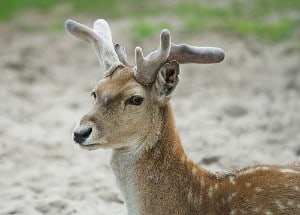Hello, readers! As an entomologist with over 20 years of experience, I’ve had to deal with a ton of pest-related cases from simple mite and rodent manifestations to full-blown garden and household infestations. And today, I’d like to talk about a different, rarer topic you may also find interesting – deer and how to keep deer out of the garden.
Recently, I’ve received quite a few emails claiming that certain people have started to experience an unusual deer activity all over the country. You may ask ‘What’s wrong with that, Martin? Those are just deer roaming around in search of food and water.’

Well, I hate to break it to you, but there is much more to it than it seems. Deer can become dangerous pests, they can spread diseases, disrupt your household, harm your crops, and even more.
So, let’s dig more deeply to see what can go wrong if you see this horned beauty around your property, how to manage deer damage, and how to protect garden from deer.
What Are Signs of Deer in Garden?
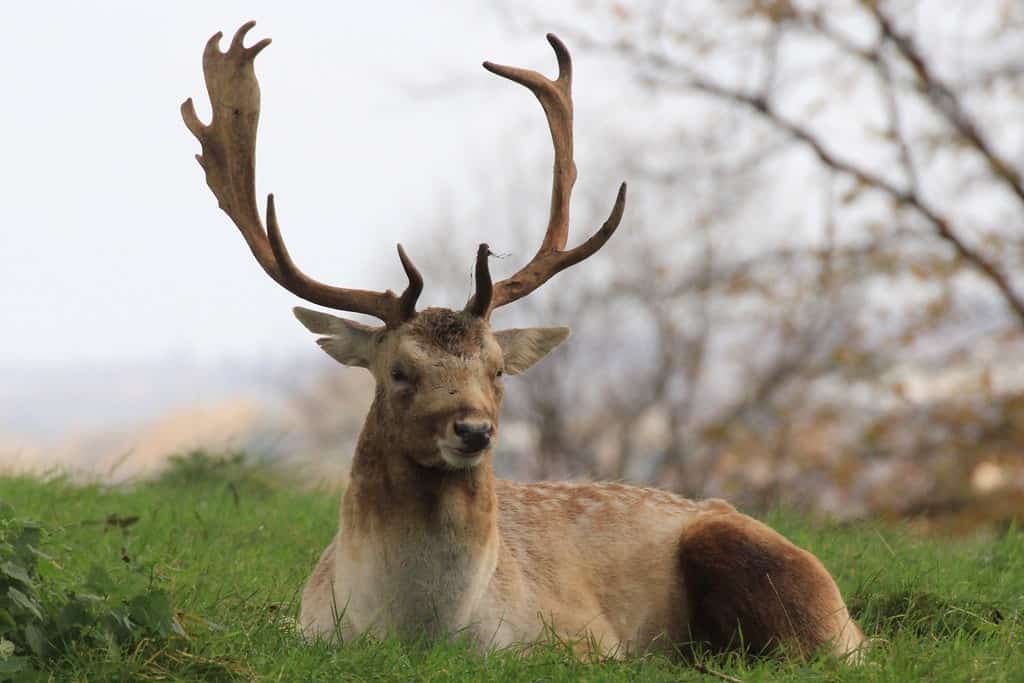
Detecting a deer on your property isn’t the hardest thing to do. Mostly because they are large and heavy animals, the hoofed are known to wander around people’s houses leaving an array of signs behind. Now, let’s see what the specific signals that you’ve got yourself a deer are.
Vegetation Damage
As deer are voracious fans of greens and leaves, they gravitate towards dense vegetation. Whether it’s a tree or a bush, they will always find a source of food there. But how do you know that it’s not a squirrel or even a swarm of extremely aggressive bugs? That’s easy, deer do not gnaw.
When they start consuming leaves, there will always be large-size bite marks. Moreover, since deer are much taller than a common rodent, they can reach out to higher layers of brushes and chew more, leaving a whole plant rather desolated.
Excrements
Another sign that easily exposes any stray deer is its biomaterial. Due to their fast metabolism, they are in constant need of filling up their stomach to the fullest. Thanks to their 4-section stomach, the mammals don’t chew food completely but rather ruminate it a bit and swallow the rest.
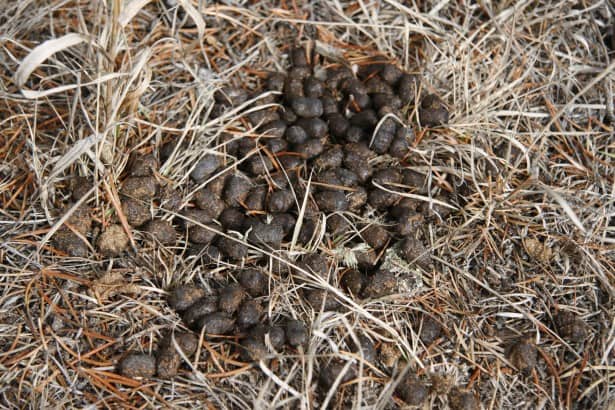
The results of the digestion are called ‘droppings’, and they do remind of tiny droplets. Brown-colored, large, round, and solid marbles are easily seen in the grass.
Traces
Having a very specific hoof shoe, these mammals leave behind a nice trail. The shoe looks like that of a cow: round, even-toed, and a little acute at the top. Though their traces are not very big, they have a ‘flattening’ feature. If a deer walks around your garden, vegetable patch, or just in the snow, it will demolish everything on its way leaving nothing but a row of flat hoofs.
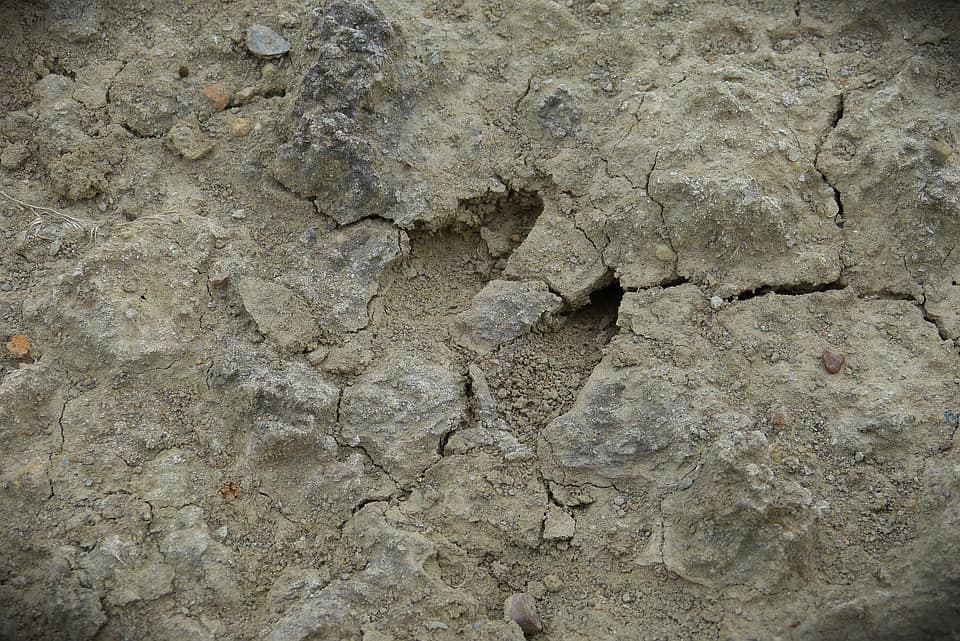
Tree Damage
Often, when there’s a lack of food during cold seasons or if they run out of other food sources, deer take a liking to tree bark. They prefer to feed on the rough material not only because of nutrition issues but also because it’s good for their digestion and teeth.
However, tree bark comes in handy for the animals’ antlers as well. As of the end of winter and the beginning of spring, the antlers start to molt. In order to help the upper layer come off more gently, the deer start to rub them against trees making it shed. Later, they acquire a new, strong layer for the following seasons. Therefore, keeping deer out of garden might become more complicated.
If you happen to see high bite marks on a trunk or parallel lines all over it, they might have been left by a deer.
Noises
Though the hoofed are mostly quiet and very hard to identify, especially in forests and dense brushes, they do produce bodacious sounds. Fawns are known to emit a cry that closely reminds a cat’s meows. Moreover, adult deer often leave a trail of swiftly moving leaves behind when they are in a hurry to escape should they get scared.
What Attracts Deer to Your Garden?
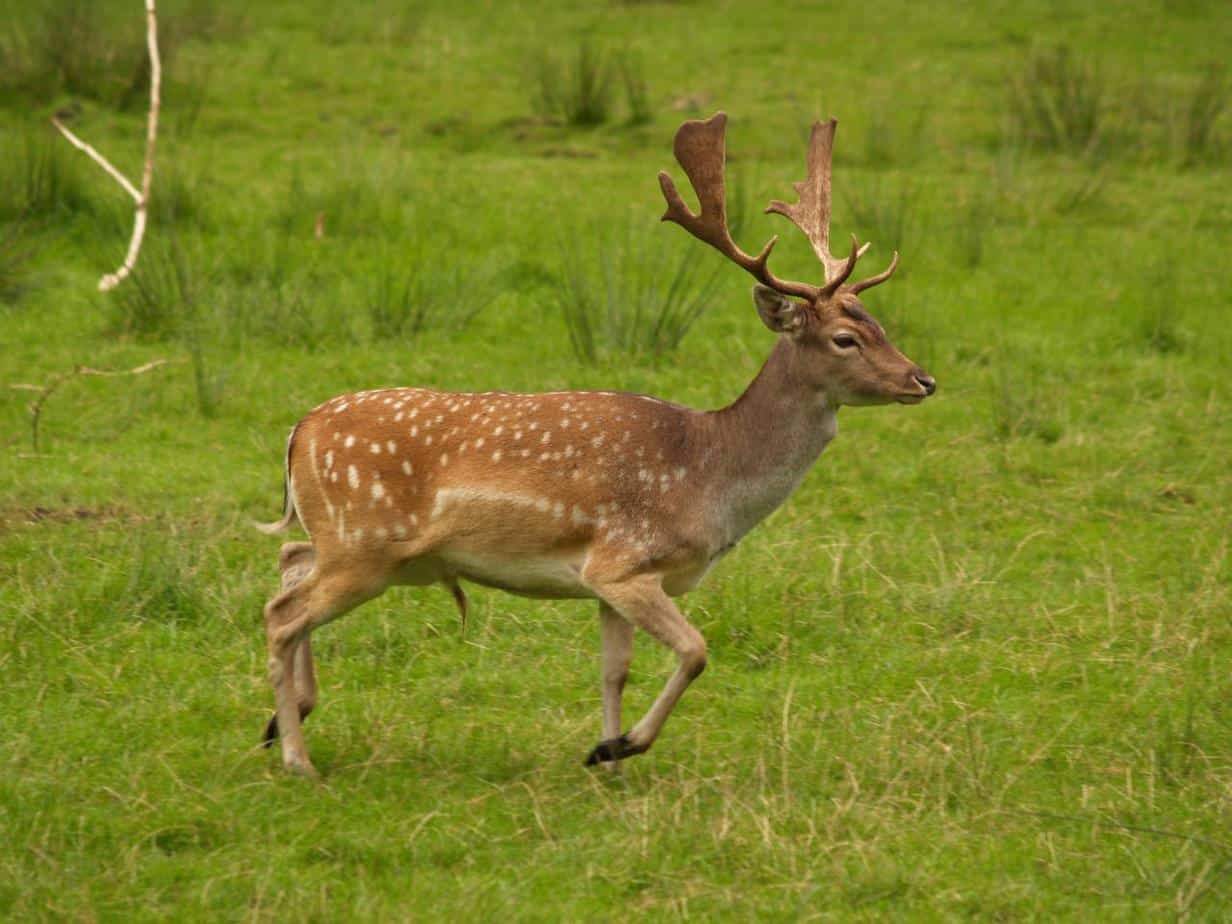
Since deer are very easy-to-scare animals, they tend to avoid any direct or close contact with humans. Furthermore, they get scared away easily by any motion or unusual sound which is good for deer prevention.
On the other hand, deer do like to come by farms, backyards, or even lawns if they anticipate no threat. Now, what do they seek for should they stumble upon your property?
Food
While forest life can be harsh sometimes, especially in late winter and early spring, deer are likely to roam around to find a food source. What do deer eat?
Vegetation, such as chicory, soybeans, peas are very appealing to the hoofed. They contain proteins that these animals so desperately need during the cold seasons.
Nuts and acorns attract them mostly because they are very easy to find and they comprise the main ratio for a deer’s everyday meals.
Apples and different kinds of berries are also quite luring to deer. Not only are they filled with fiber, but they also contain sugar that the hoofed hanker for. These animals like sweets more than anything else especially because those are rather rare in their natural surroundings. Moreover, if you or your children like to leave peanut butter or jelly leftovers in your backyard, deer can easily smell them and follow the scent trail to the source.
In contrast to sweet food, deer absolutely enjoy salty and salt-infused products. Thus, if you live near a salty water source or happen to have a few sacks of salt for household purposes, an antlered animal is likely to sniff around and be drawn to it.
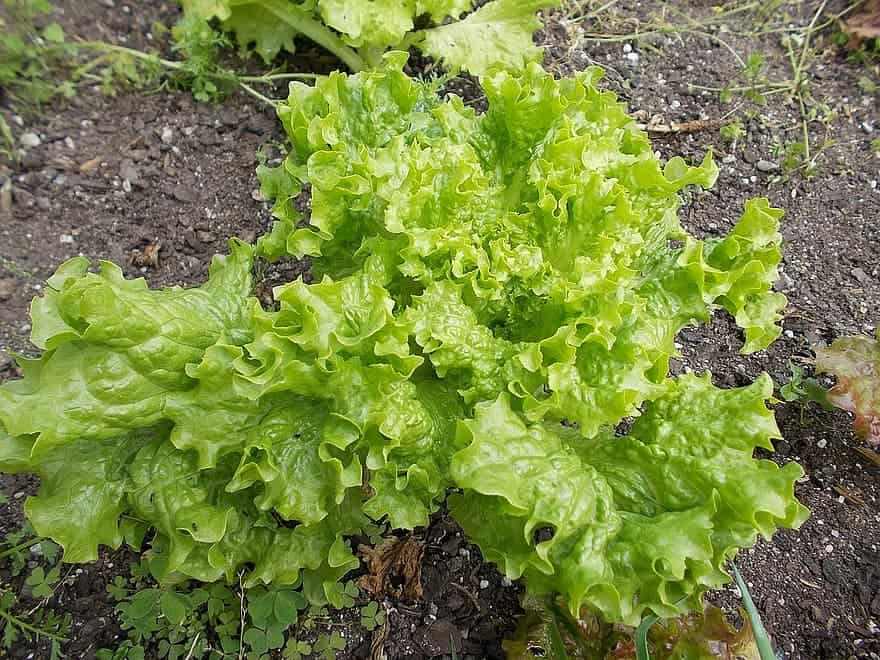
Water
Besides food, deer always need a source of fresh, drinkable water. They are attracted to human households when such a source is scarce in their natural habitat. As a substitute, they might find pools of rainwater, tin cans, or dog water bowls to drink from.
Environment
It’s not a big secret that deer stay away from rushy and noisy places. Whenever they sense a possible danger or disturbance, they hurry to leave the site and change their location for a safer one.
This being said, the 4-legged animals are most unlikely to enter any property that is immersed in hustle and bustle. They look for a calm area where they can enjoy their grass savoring and walks, such as:
- High and grassy areas to hide from possible predators.
- Dense vegetation with nutritious consumables.
- Distant sites that are far from any traffic and urban noise.
- Fenceless and not segregated spaces so that they always have a backup track to escape by.
Places with other non-domestic animals. If you have squirrels or raccoons as frequent guests in your garden, then it increases the chance of visiting stray deer since they might feel safer when surrounded by other wild animals.
Bird Feeders
Yes, another attractant for deer is a simple feeder for birds. They may find it useful especially if such an item is located near the ground. The animals will use it as an easy-to-access way of obtaining food and water.
What Will Keep Deer Out of My Garden?
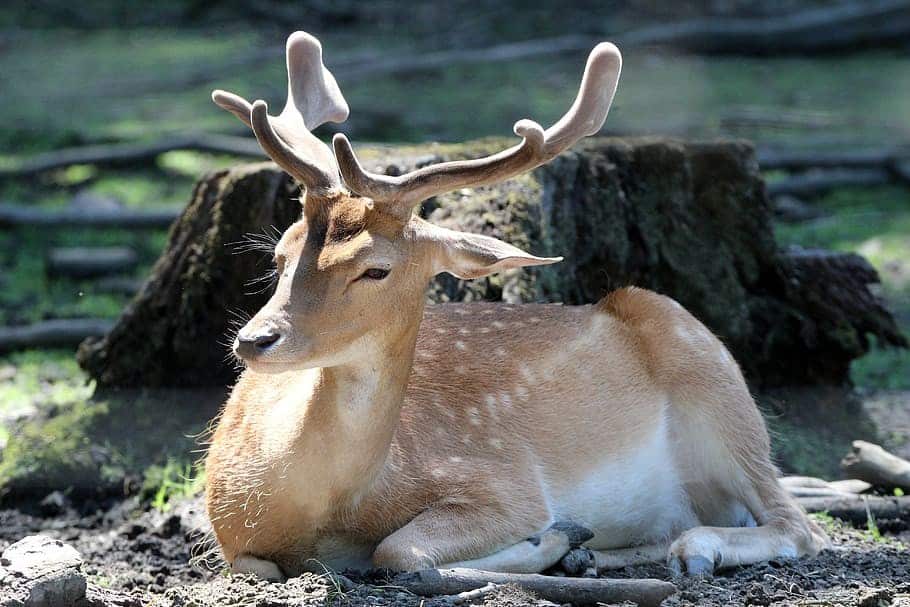
If you happen to be surrounded by deer coming by your household every now and again, and you feel disturbed by their presence, there are a couple of time-proven solutions for protecting gardens from deer. So, unless you’re into deer hunting, here are some ways for deer proofing garden.
Tactic #1 No More Deer Attractants
This approach implies that you need to get rid of all the possible things that these animals find attractive.
First, what keeps deer away from flowers is placing deer-attracting plants closer to your house. If you have a vegetable patch or a lot with soybeans, try to move them nearer the house so that the animals can always sense humans nearby. This will play a nice trick on their instincts and force the animals to stay away and roam around more peaceful places in search of food.
Second, always collect your fruit as soon as it seems ready for harvest. While these animals have enhanced smell, they can sense food from far away. The hoofed like to feed on ripe, ungathered crops in late-spring and mid-summer seasons. By putting it all away, you can avoid a stray deer in your garden.
Third, make sure to eliminate all unwatched water sources that deer can use. Spill out collected rainwater and pick up deep and round objects where water can accumulate.
Fourth, demount bird feeders or, at least, move them further from the ground. If a deer cannot reach a feeder, it won’t find it useful to come back later.
Last but not least is your trees, more specifically tree bark. There’s always an option to cover the lower levels of your trees with white latex paint. This method is useful for disinteresting animals, like deer, rabbits, or squirrels from chewing on trunks. All of these methods will help you keep deer from eating trees on your property.
Tactic #2 Garden Deer Fence

Right, this option can come in handy if stray deer have frequented your property, and they don’t seem like leaving any time soon, so you need to keep deer from eating plants.
You can always start with protecting your grounds with a simple 5-6 feet tall wooden or metal deer fence. While deer like to sprint a lot, they aren’t fans of impediments. Normally, a deer will try to detour a blocked area or just leave it be. However, it’s recommended to install solid blockages without any gaps. There is a higher chance for the hoofed to maneuver around obstacles if they see something tasty on the other side.
Another option is an electric fence. Though it’s prohibited in some states, for which you need to check your local regulations, an electric wall is a method assessed with time. There’s a variety of modern e-fences that can work on solar power or from a standard outlet.
It’s important to mention that such products’ maintenance might require regular attention. They need to be trimmed of any plants, shrubs, or vines as those can disturb the fence’s electricity supply.
Because deer have an enhanced visual capacity, they strongly rely on their eyesight for finding neat feeding places. An invisible or black net can be a great distraction that causes the animals to avoid moving towards a garden. It’s childishly easy to install and doesn’t require much to take care of.
In case your backyard is vast, whereas your patch is relatively small, there’s always a need to know how to keep deer out of vegetable garden by outlining it with small metal cages. They can be either bought online or handmade if you’re quite crafty.
Tactic #3 Resistance

Besides a range of things that deer find alluring, some of them have the opposite effect. There are two groups of treatments protecting gardens from deer, i.e. synthetic repellents and natural remedies.
As for synthetic ways, the market is abundant with helpful substances. The most effective ones generally emit an odor that resembles that of a dead animal. The smell of decay usually signalizes a threat that drives the hoofed away. Effective against deer, products of such constituencies are helpful against rodents and birds as well.
On the other hand, there is a whole tier of synthetic repellents with natural components. Chaste tree, boxwood, mahonia, figs, etc. are only a dribble of essences extracted from plants and trees that are repulsive to deer. They normally don’t contain any chemicals, which makes them completely safe for both the hoofed and people. I like it that deer-repellent products usually last long enough and there’s no need to purchase them again and again.
In case you’re not in favor of synthetic products, there’s an option of reinforcing your garden with the same plants from which synthetic extracts are acquired. You can plant lavender, vanilla, garlic, etc., in the surrounding of vegetation that you would like to secure. However, I believe that such measures are less effective and time-consuming. There is no need to reinvent the wheel if you can buy it online.
Tactic #4 Fright
The best way to deal with any infestation is to prevent it. Though the array of precaution methods is wide in its extent, you can ensure your garden’s safety by driving deer away with anything at hand.
Well, should you wonder about how to scare deer away, then first, you can let your dog play in the yard. Right, dogs can create a lot of noise if they see any stray animal passing by the property. Since the hoofed are very cautious about other critters, let alone their fragile nature, they will do anything possible to avoid an area with a watchdog.
Second, you can install garden and backyard decorations that create an illusion of a place filled with bustle. Try hanging some wind chimes and decorative windmills. Although they don’t produce a lot of noise, their buzzing and rattling sound will keep deer scared enough.
Of course, the best way to create a seemingly hostile atmosphere is to mount motion-activated devices. Automatic lights and sound alarms are useful for ‘night shifts’. Thus, when deer enter their sensitive area, the devices will instantly come to motion and keep deer away from trees and vegetation.
On top of this, you can equip the property with a remote sprinkler system that you can activate whenever you see a hoofed wanderer approaching your territory. This will plant fear and understanding in deer that this area might be dangerous for them.
Related Post: How to Get Rid of Armadillos
Top 5 Deer Treatments
1. Concentrated Deer Repellent Bobbex Deterrent — the Best Deer Repellent Spray
[amazon box=”B0027255VI” template=”vertical” tracking_id=”how-to-keep-deer-out-of-garden-20″ button_text=”Check price on Amazon” button_detail=”https://shareasale.com/r.cfm?b=1724849&u=2583381&m=107474&urllink=diypestcontrol%2Ecom%2Fbobbex%2Ddeer%2Drepellent&afftrack=how%20to%20keep%20deer%20out%20of%20garden” button_detail_text=”Check price on DIY Pest Control”]
Specifications:
- Scent: Unscented
- Item Form: Spray
- Item Volume: 32 fl. oz.
- Item Weight: 2.38 pounds
- Item Dimensions: 8.66 x 5.91 x 3.94 inches
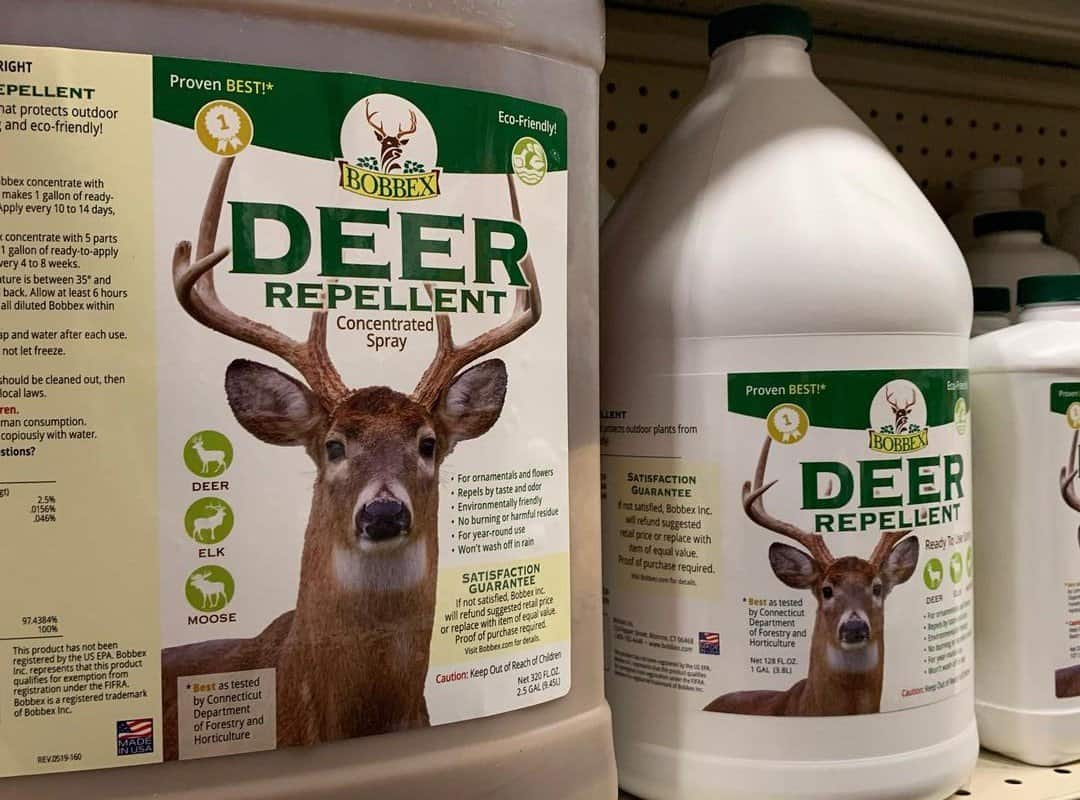
The Bobbex Deterrent is a high-quality repellent for deer. Created with natural ingredients and deprived of any chemicals, the spray is meant to provide long-lasting protection for the garden, lawn, and yard.
Thanks to years of gardening supplies manufacturing, Bobbex specializes in repellents and anti-pests treatments and is considered 93% effective against its target. When applied, the sediments emit a smell repulsive for deer that covers a large area of any property.
Its spray container has an extremely easy application. Before using, it’s highly recommended to water it down in the 1 to 8 proportion and thoroughly mix it. Apply a sufficient amount around brushes, trees, and flowers or other sites where deer may pass and leave it for some time.
There’s no need to be afraid of any negative impact on the vegetation or surroundings. The product is completely safe for fruit and vegetables, as well as people and animals.
| Pros: | Cons: |
|
|
2. Orbit 62100 Yard Enforcer Sprinkler — the Best Motion Activated Sprinkler to Scare Deer Away
[amazon box=”B009F1R0GC” template=”vertical” tracking_id=”how-to-keep-deer-out-of-garden-20″ button_text=”Check price on Amazon”]
Specifications:
- Uniquie Day And Night Detection
- Material: Plastic, Zinc
- Item Weight: 2 pounds
- Item Dimensions: 10 x 5 x 24.5 inches
- Target Species: Deer, Dogs, Cats, Large Birds, Skunks, Rabbits, Raccoons and more
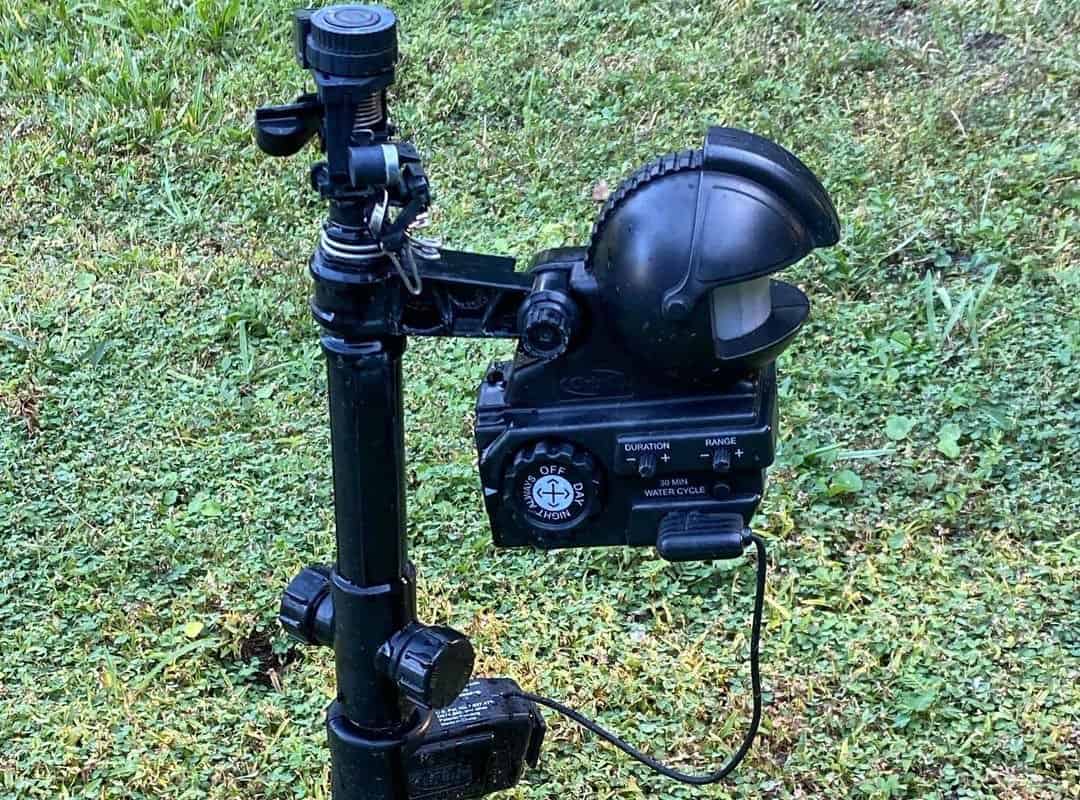
The Orbit Sprinkler is a perfect non-chemical repellent. The product is a nice substitute for sprays and other liquid treatments because you don’t need to reapply it every couple of hours. You just mount it, switch it on, and that’s it.
Thanks to the classy and very handy design, the sprinkler works as a scare-away mechanism using water and light. When a pest enters an area monitored by over 7000 sensors, the in-built detector is automatically activated, using a flash of high-concentrated light and a stream of water directed right at the animal.
A significant feature of this device is its almost artificial intelligence. Not only does it cover an area of approximately 4,000 square feet but it also sprays a considerably small amount of water (up to 3 cups) directly at the target. Thus, this makes it very eco and wallet-friendly.
| Pros: | Cons: |
|
|
3. Enviro Pro 1025 Deer Scram Repellent Granular — the Best Granular Repellent
[amazon box=”B00169FKLI” template=”vertical” tracking_id=”how-to-keep-deer-out-of-garden-20″ button_text=”Check price on Amazon”]
Specifications:
- No Synthetic Additives
- Non Toxic
- Biodegradable
- Item Form: Granules
- Item Weight: 6 pounds
- Item Dimensions: 8.25 x 8.25 x 10 inches
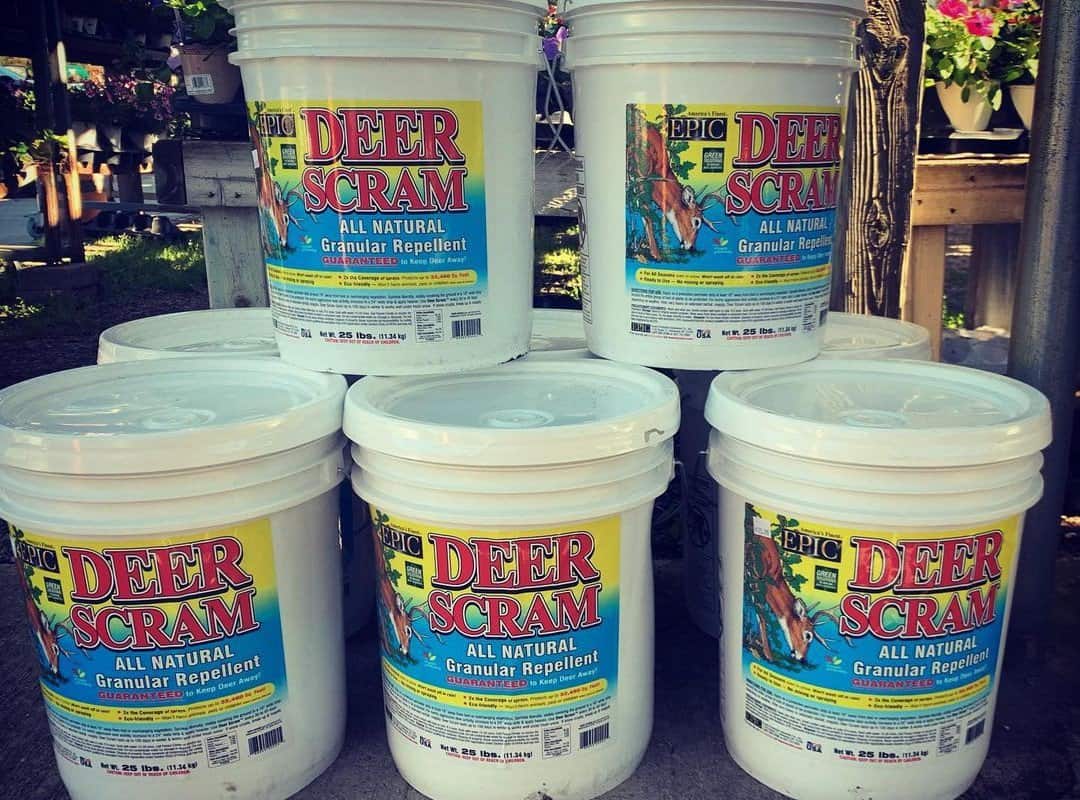
The Enviro Pro product is a superb solution to the deer problem. By scattering the product around problematic areas, you can secure plants, trees, and other vegetation from deer that are looking for food in your garden.
The principle of the granules effect is very simple, it gives off a smell similar to the one that decaying deer flesh does which makes potential critters run away. This is one of the most efficient strategies to keep deer from eating flowers. However, the scent is completely unnoticeable for humans and other animals.
While the repellent has very strong repulsive properties, it remains one of the safest on the market. The formula consists of exclusively natural elements, avoiding any synthetic or hazardous components. It neither harms plants nor contaminates soil since the constituency includes a variety of minerals that vegetation loves so much.
| Pros: | Cons: |
|
|
4. Bird Netting [Heavy Duty] Protect Plants and Fruit Trees — the Best Deer Prevention Garden Net
[amazon box=”B00XIRH1CC” template=”vertical” tracking_id=”how-to-keep-deer-out-of-garden-20″ button_text=”Check price on Amazon”]
Specifications:
- Material: Plastic
- Color: Green
- Item Weight: 2.44 pounds
- Item Dimensions: 74 x 30 x 7 inches
- Target Pests: Birds, Annimals
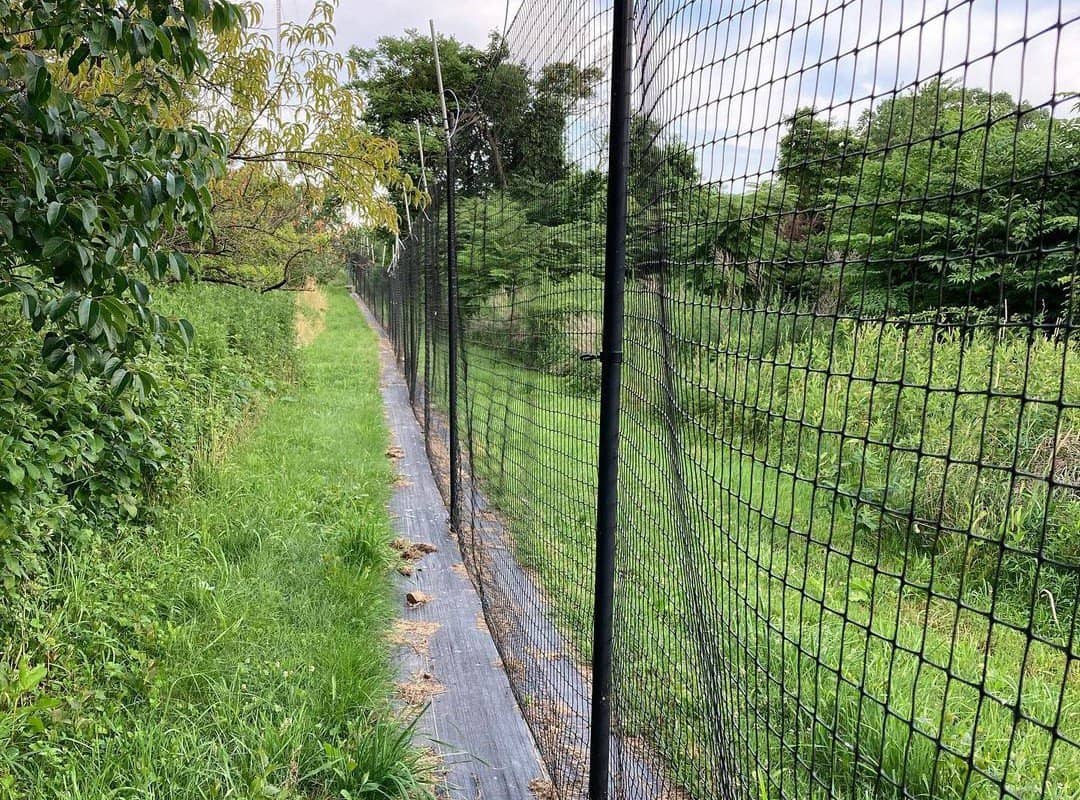
The Bird Netting is a smart and easy appliance for preventing the devastation of fruit and vegetable patches from deer. The technology is designed specifically as a precaution measure that doesn’t cause any fruit growth or soil fertility declination.
Created from hardened polymers, the net can be stretched up to 66 feet, wrapped around tree crowns, flowers, berry bushes, etc., and reused afterward. Since the product is ultralight, it doesn’t cause any additional pressure onto the fruit; however, it anchors firmly to leaves so that it’s not blown away by the wind.
Moreover, the net is designed to suit multiple needs; therefore, it can be manually cut into many separate small-sized nets to cover specific areas to keep deer out of garden without fence.
| Pros: | Cons: |
|
|
5. Easy Gardener Deer Barrier — the Best Deer Fence
[amazon box=”B000A16T7M” template=”vertical” tracking_id=”how-to-keep-deer-out-of-garden-20″ button_text=”Check price on Amazon”]
Specifications:
- Will not rust, rot or corrode
- Won’t Harm Animals
- No Sharp Edges
- Full 7’ height
- Item Weight: 5.49 pounds
- Item Dimensions: 1 x 1 x 1 inches
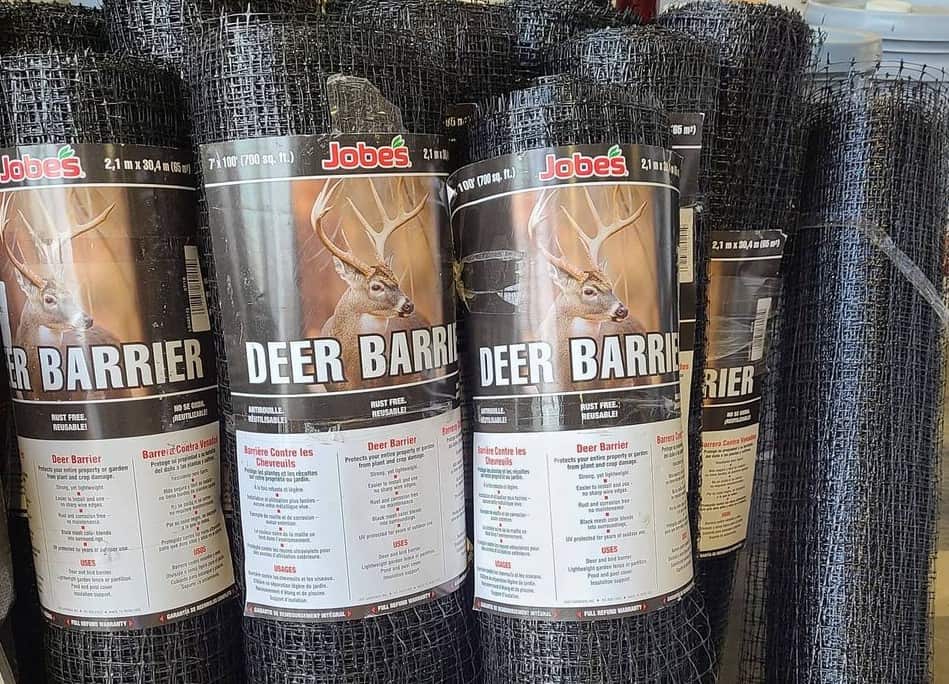
The Easy Deer Barrier is, indeed, an effective solution for deer repellent. The tough poly net is created as an impediment for deer and rodents that disables them from entering designated garden areas. Thanks to its 7 by 100 dimensions, the product covers an extensive territory both in width and in length and will prevent deer from eating plants.
Since the product is made of durable soft plastic, it can withstand any weather conditions and is not susceptible to temperature changes. Also, the fence is made to be absolutely non-hazardous and not to pose any health dangers to human or animal health.When it comes to installing, the net is normally conjoined with poles or trunks to provide strong support.
| Pros: | Cons: |
|
|
FAQs
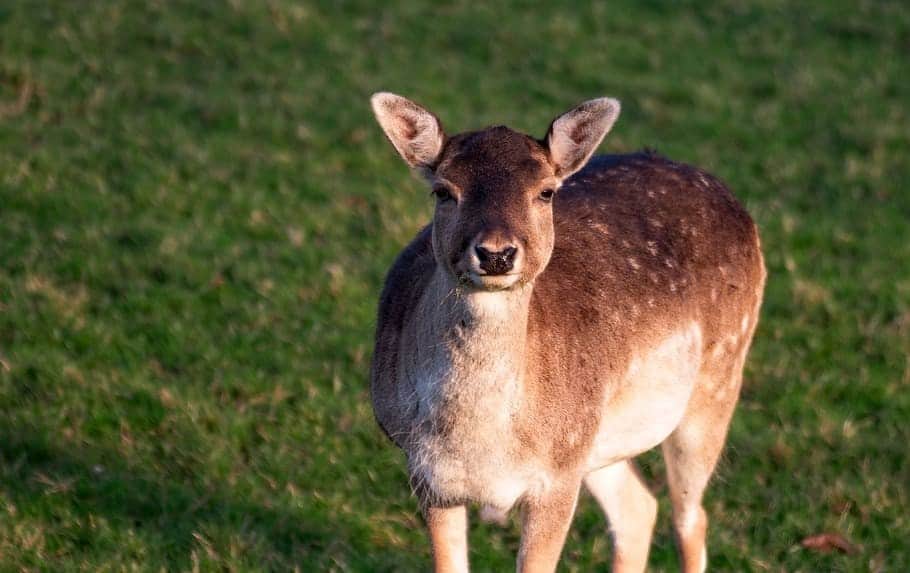
What Plants Keep Deer Away?
There are a lot of plants that a deer would never chew on because those can simply be unpleasant or quite toxic for them, such as garlic, chives, vanilla, sweet box, and many others. Most of them are consumed by humans or used as decorative plants though some of them might be dangerous for people.
Does Lavender Keep Deer Away?
In fact, it does repel deer, but only if they sense a large amount of it in their surroundings. A few bundles of lavender will most likely not be enough for acting as a sufficient repellent.
Related Post: How to Keep Coyotes Away From Your Property
What Smells Repel Deer?
A bunch of natural remedies can be quite repulsive for the hoofed, starting with chives and garlic, and finishing with vanilla and sweet box. However, what does make a deer run away as far as it can get is the smell of decaying animal flesh that so many synthetic repellent contain. This alarms them of possible dangers and forces them to flee.
How Tall Should a Garden Fence Be to Keep Out Deer?
The taller, the better. However, an effective anti-deer fence should be at least 5 feet tall, otherwise, the animal can easily jump over it.

The Bottom Line
As it’s easy to see from the article and recommendations, most deer don’t pose the same kind of danger like real pests (rodents, mites, etc.); they are unlikely to spread contagious diseases or infest your attic. But their innocent attempts to find food and water sources can end up as a real disaster for people’s property.
Therefore, I advise you to pay close attention to possible deer visits because once they take a liking to your garden or yard, the hoofed animals will be rather difficult to drive away. In that case, make sure to apply a couple of tips I’ve left above.
Now, what do you think about deer roaming around a property? Have you ever had to get rid of them? How exactly did you manage to do it? Please, comment down below, I’d love to hear more!
References:
- Managing Deer Damage (Indiana Department of Natural Resources):
https://www.in.gov/dnr/fishwild/2718.htm - What do deer eat and why (U.S. Forest Service):
https://www.fs.usda.gov/treesearch/pubs/53707 - Deer Hunting (Wisconsin Department of Natural Resources):
https://dnr.wisconsin.gov/topic/hunt/deer

